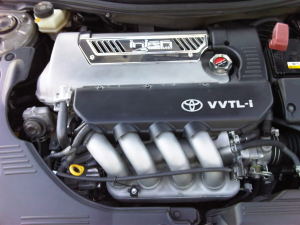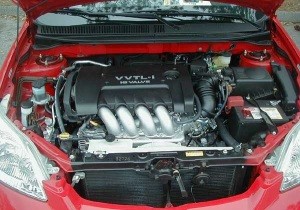
Engine 2ZZ-GE
 Toyota's ZZ series engines have become one of the discoveries of the early 21st century. They replaced the rather successful, but outdated gasoline units that were installed on the C-class cars. The 2ZZ-GE power unit became, perhaps, one of the most common at that time.
Toyota's ZZ series engines have become one of the discoveries of the early 21st century. They replaced the rather successful, but outdated gasoline units that were installed on the C-class cars. The 2ZZ-GE power unit became, perhaps, one of the most common at that time.
In terms of its characteristics, the 2ZZ-GE engine was significantly superior to its predecessors, which made it possible for the corporation to significantly expand the scope of use of the unit and borrow it from its partner concerns.
Engine technical data
In the early 2000s, the automotive concerns of the world entered the next wave of a kind of arms race. The engines had less useful volume, used a small amount of fuel, but at the same time they gave out enviable power.
The main technical characteristics of the 2ZZ-GE engine, which was traditionally developed with the participation of specialists from Yamaha, are as follows:
| Working volume | 1.8 liters (1796 cc) |
| Power | 164-240 h.p. |
| Compression ratio | 11.5:1 |
| Gas distribution system | VVTLs |
| Timing chain drive | |
| Light-alloy material of the piston group, aluminum is taken as the basis | |
| Bore | 82 mm |
| Piston stroke | 85 mm |
The engine received undoubted advantages for operation in the USA and Japan, where the quality of lubricants and fuel was already quite high at that time. In Russia, the ICE 2ZZ-GE received controversial reviews from car owners.
The main disadvantages and advantages of the unit

The Toyota 2ZZ-GE engine has a fairly large potential - about 500 kilometers. But its real life is more dependent on the quality of oil and gasoline. The motor is too sensitive to second-rate materials.
The advantage for many drivers turned out to be a high engine speed threshold. But it also made the unit not too high-torque at low speeds - you have to turn the engine hard to achieve good dynamics. And this despite the fact that the unit uses the Turbo system.
The main disadvantages are summarized in the following list:
- too high sensitivity to low-quality fuel and oil;
- inability to overhaul due to the characteristics of the piston group;
- a breakdown of the VVTL-I system, which controls the valves, is not uncommon;
- increased oil consumption, sticking of piston rings are the problems of almost every unit of this series.
Many owners of cars with this engine have tuned some systems in order to achieve higher power ratings and reduce the rev threshold to achieve nominal performance. But this also leads to increased wear of engine parts.
The scope of the unit is as follows:
| Model | Power | Country |
|---|---|---|
| Toyota Celica SS-II | 187 hp | Japan |
| Toyota Celica GT-S | 180 hp | USA |
| Toyota Celica 190/T-Sport | 189 hp | United Kingdom |
| Toyota Corolla Sportsman | 189 hp | Australia |
| Toyota Corolla TS | 189 hp | Europe |
| Toyota Corolla Compressor | 222 hp | Europe |
| Toyota Corolla XRS | 164 hp | USA |
| Toyota Corolla Fielder Z Aero Tourer | 187 hp | Japan |
| Toyota Corolla Runx Z Aero Tourer | 187 hp | Japan |
| Toyota Corolla RunX RSi | 141 кВт | South Africa |
| Toyota Matrix XRS | 164-180 h.p. | USA |
| Toyota WiLL VS 1.8 | 190 hp | Japan |
| Pontiac Vibe GT | 164-180 h.p. | USA |
| Lotus Elise | 190 hp | North America, UK |
| Lotus Exige | 190 hp | USA, UK |
| Lotus 2-Eleven | 252 hp | USA, UK |
Summing up
If the 2ZZ-GE engine is out of order on your car, you will have to bring a contract engine. This unit is practically beyond repair. It is necessary to clarify the series of the engine, because the "charged" versions were installed on the Lotus, with a capacity of up to 252 horses.

